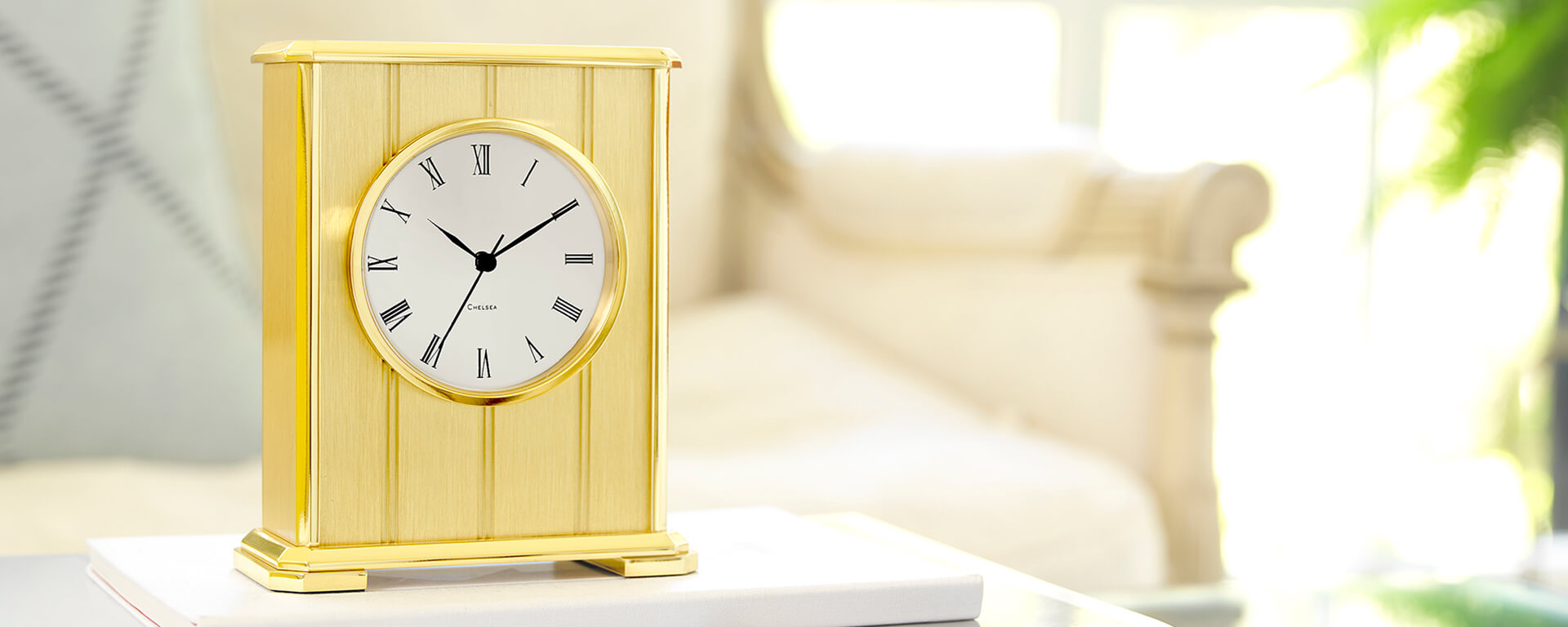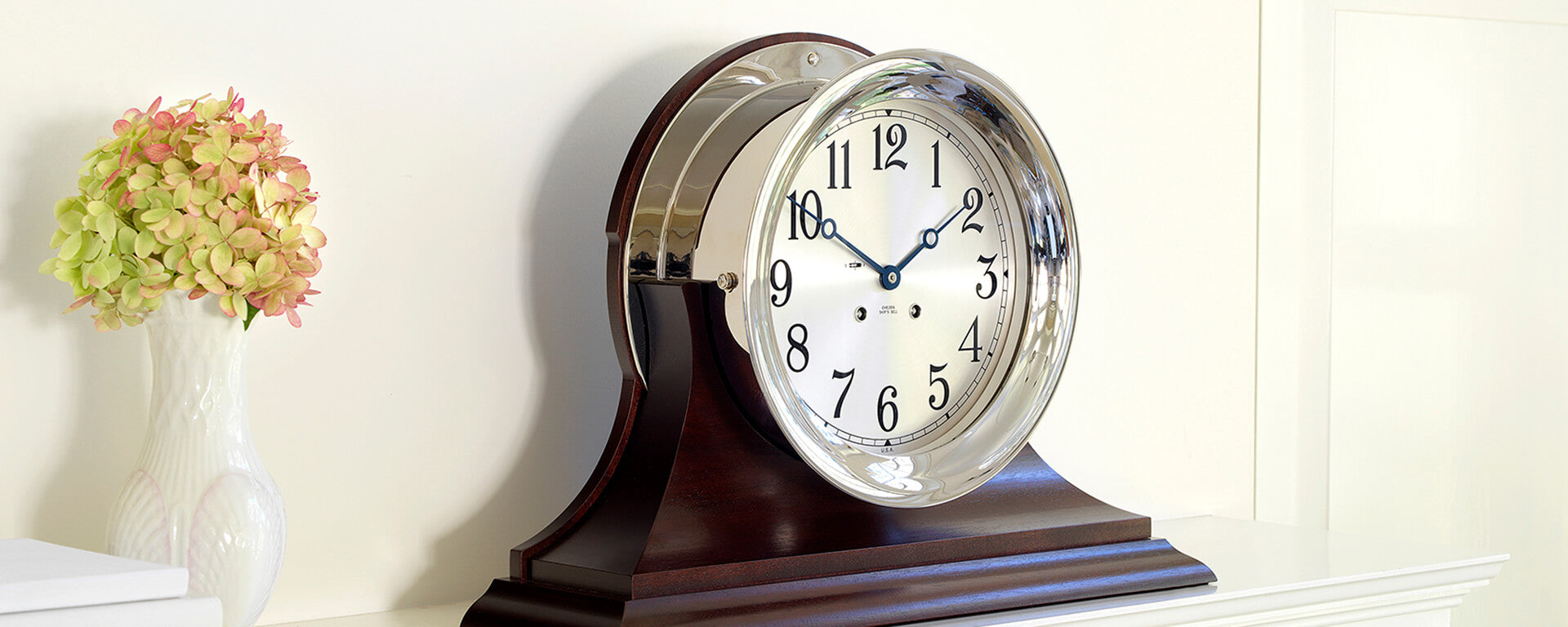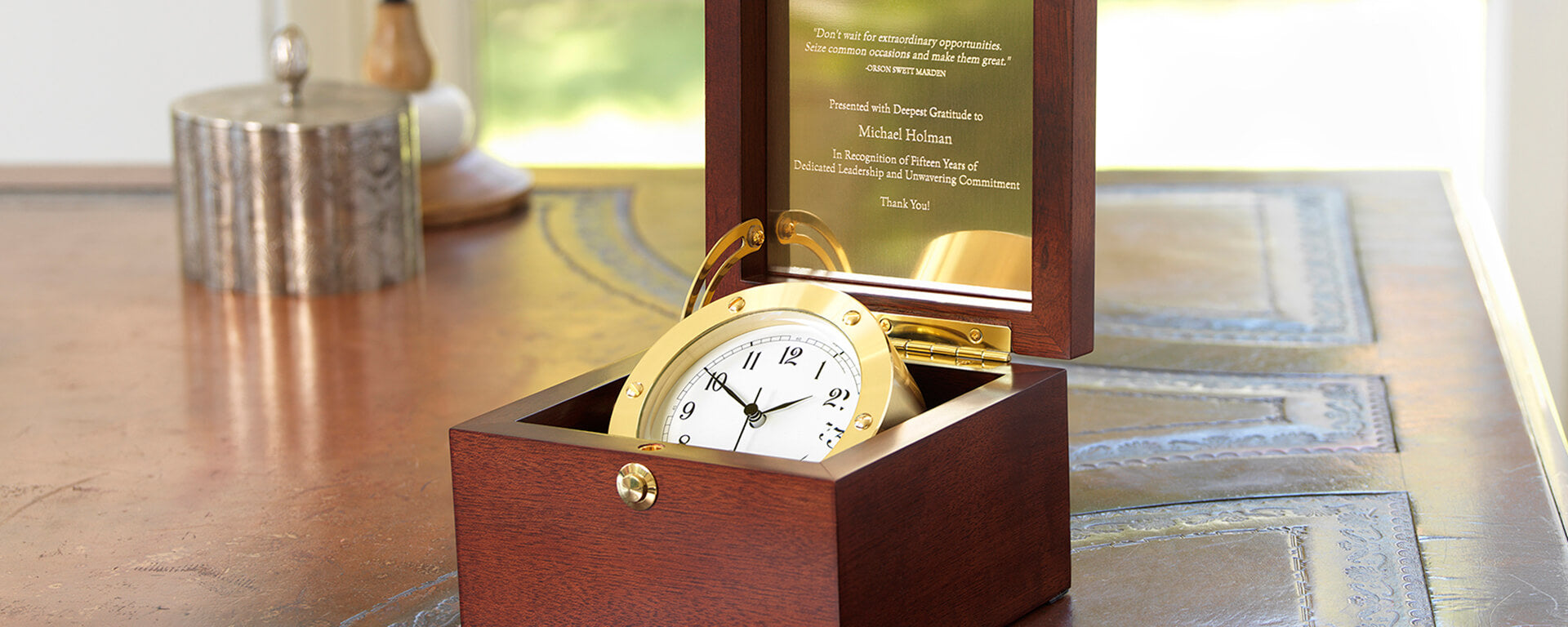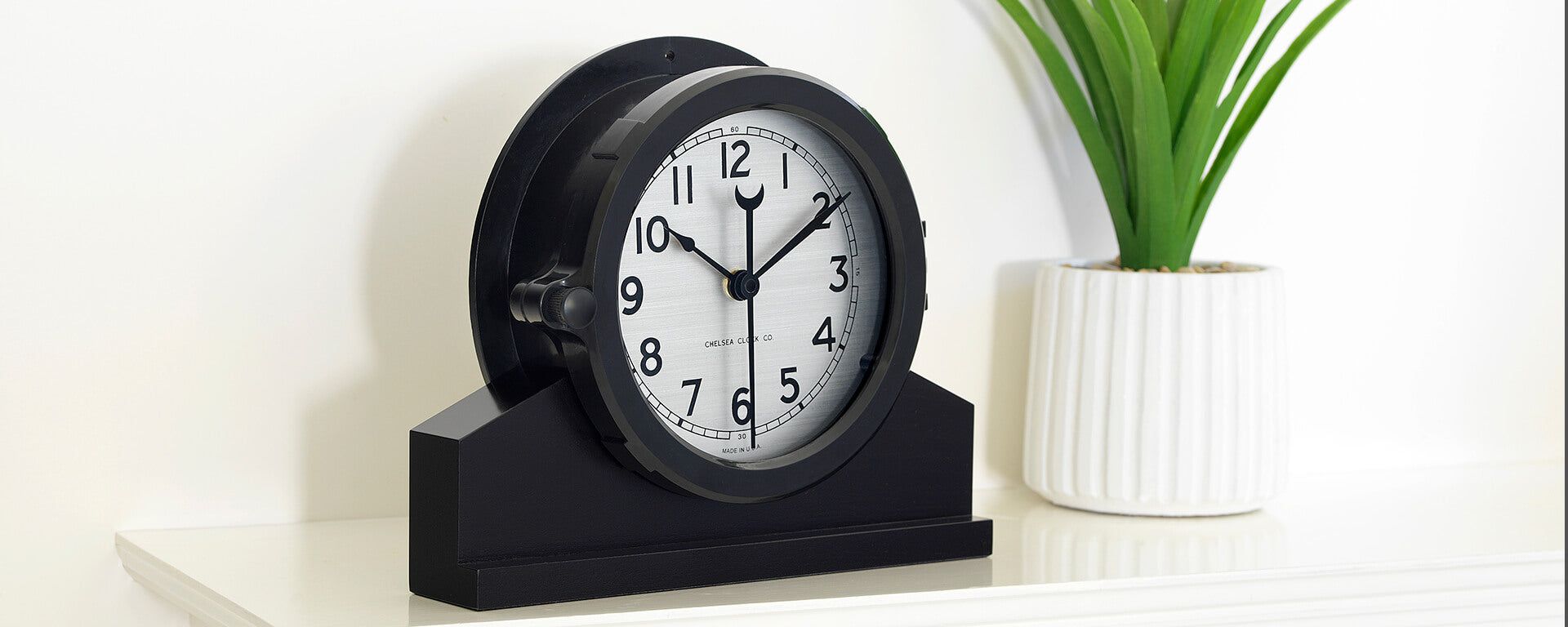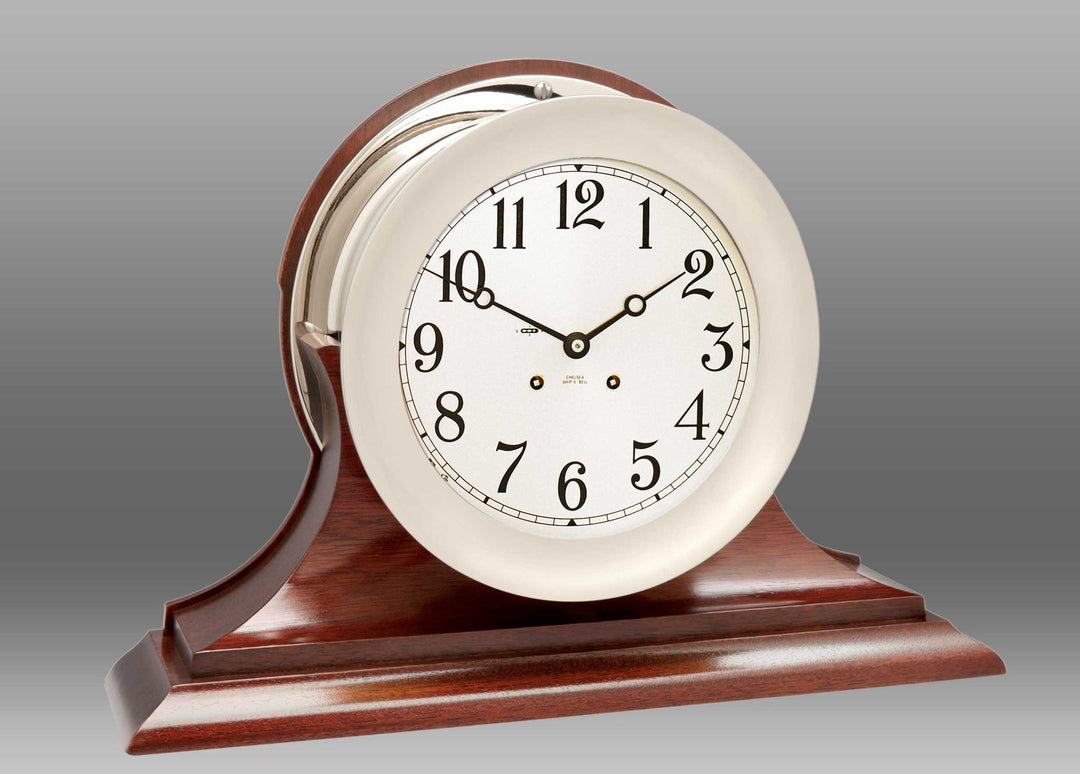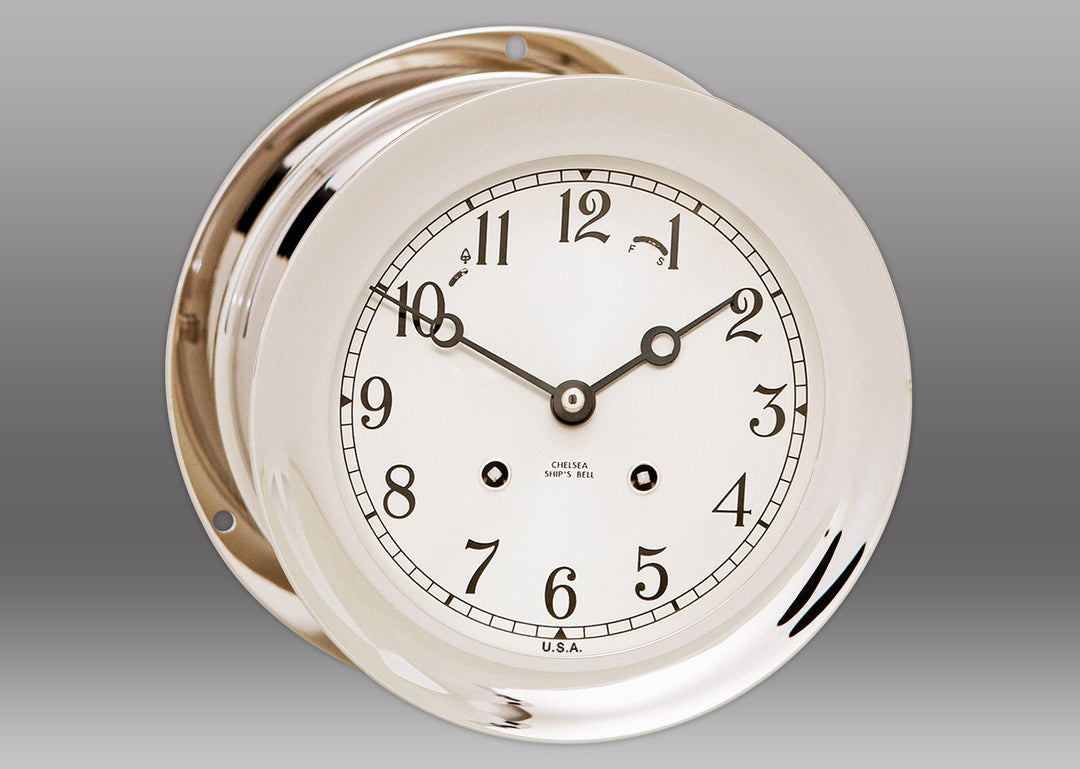How to Set A Barometer (and other FAQs)
What is a Barometer?
Barometers are used by scientists, fishermen, boaters and other weather watchers to monitor changes in atmospheric pressure — i.e. the “weight” of the air. Typically, a change in air pressure signals that the weather is about to change: Rising pressure signals improving conditions, while a drop in pressure indicates poor weather is on the way. A passing storm, for instance, often brings rapidly falling pressure.
Where Should I Keep my Barometer?
Generally, a barometer performs best when it's mounted indoors — away from the elements — in a place experiencing the same air pressure as the outdoors.
How Does a Barometer Work?
Chelsea Clock barometers are aneroid barometers (invented in 1844 by the French scientist Lucien Vidi), meaning they measure atmospheric pressure without mercury or other fluids. Instead, our barometers use a sealed metal chamber that expands and contracts depending on the atmospheric pressure surrounding it. A change in pressure causes the dial’s indicator hand to move.
Barometers can measure pressure in inches, millibars or centimeters. At sea level, normal atmospheric pressure is approximately 29.92 inches, which translates to 1014 millibars or 76 centimeters. Higher elevations experience less pressure due to decreased pressure overhead
How to Read a Barometer
Aneroid barometers have a circular display face much like a clock that indicates the current atmospheric pressure. The indicator hand moves both clockwise and counterclockwise to point to the current pressure. Sometimes descriptors like “stormy,” “rain,” “change,” “fair,” and “dry” are marked above the numbers on the dial to make it easier to interpret. Even without these words, though, reading a barometer is relatively simple:
- When the barometer reading rises, the air is cool and dry, and it usually indicates good weather.
- When the barometer pressure falls, the air is warm and wet, and it usually means a storm or other wet weather event is coming.
- If the barometer reading is steady, then the weather likely will be too.
How to Set a Barometer
When a Chelsea Clock barometer leaves our factory, it’s adjusted to register pressure at sea level, which is the standard for measuring barometric pressure regardless of location or altitude. However, because atmospheric pressure decreases as altitude increases, if you live in a higher altitude you’ll need to adjust your barometer to get an accurate reading.
To do this, call your local weather bureau and ask for the current barometer reading (or find it on their website). Then adjust the barometer’s indicator hand (the long one) to match the current reading using a small screwdriver or key. However, if you live at an altitude of 5,000 feet or higher, your barometer should be adjusted by a professional. If you know what elevation you live or sail at, Chelsea Clock can calibrate your barometer upon request when you place an order.
Pro Tip:
Before taking a reading, gently tap the face of the barometer to release any built-up frictional resistance on the indicator dial.
Want to Purchase a Barometer?
Chelsea Clock has you covered. Shop our collection of barometers now to find one for your home, office or boat.


